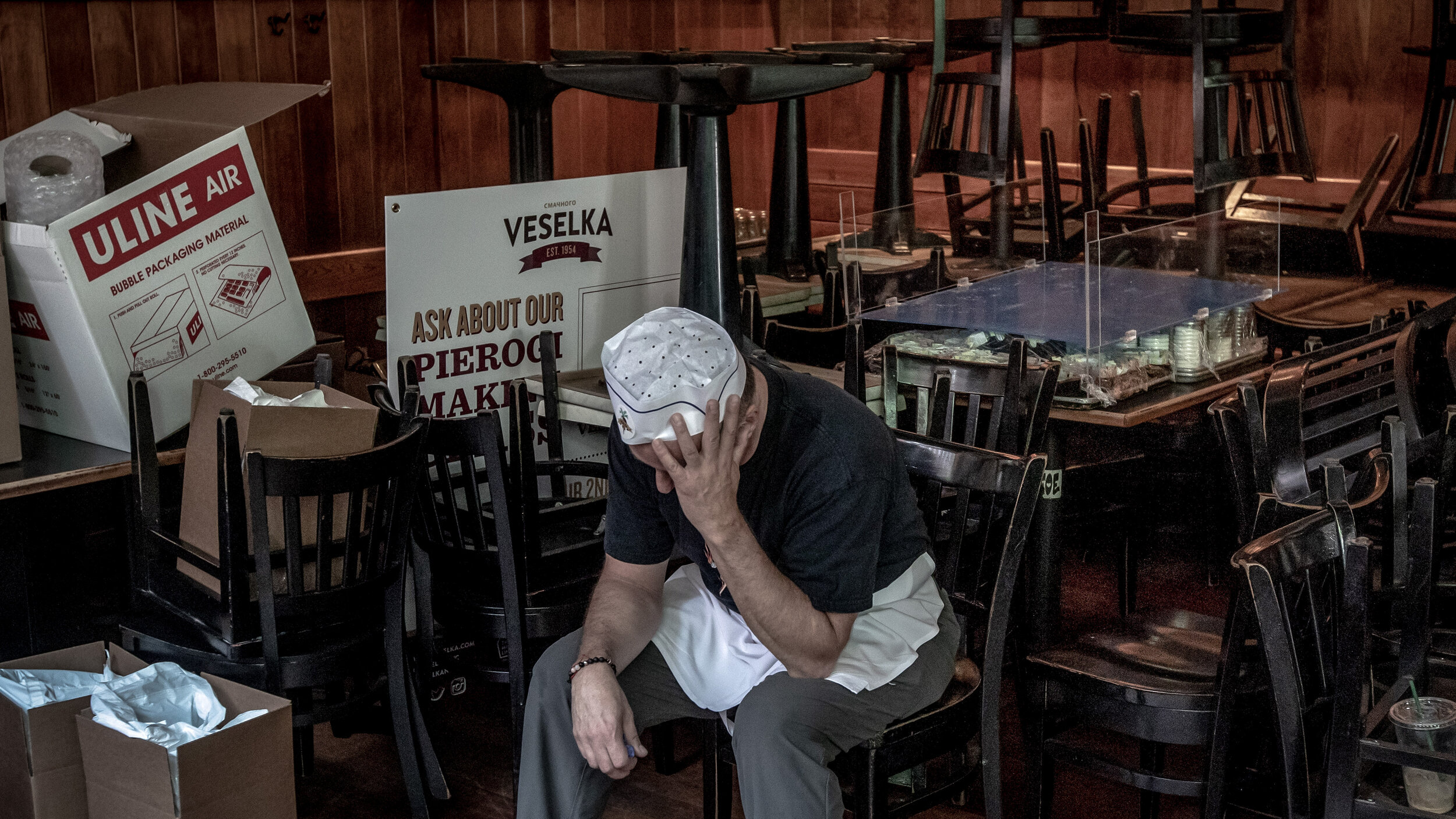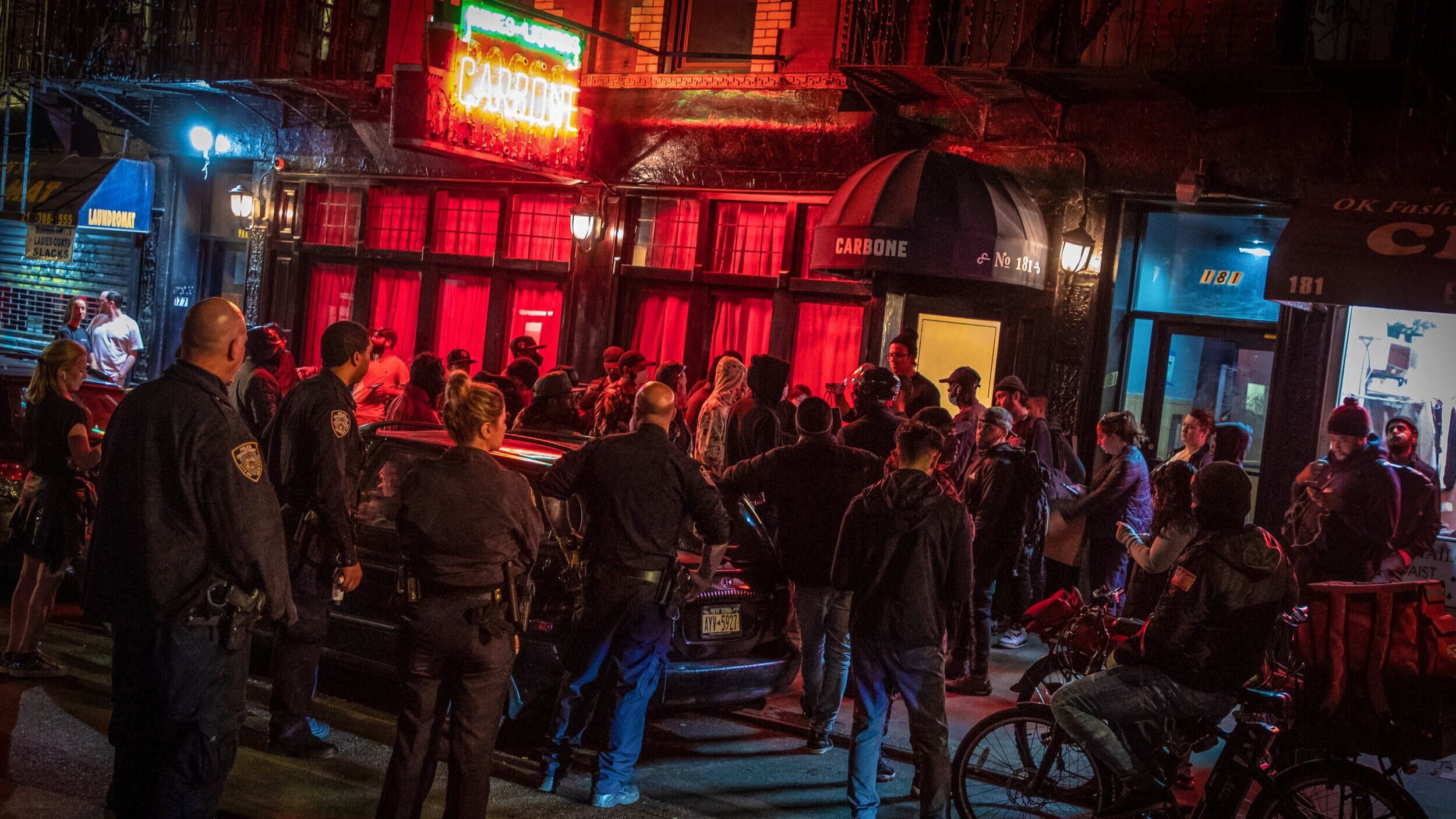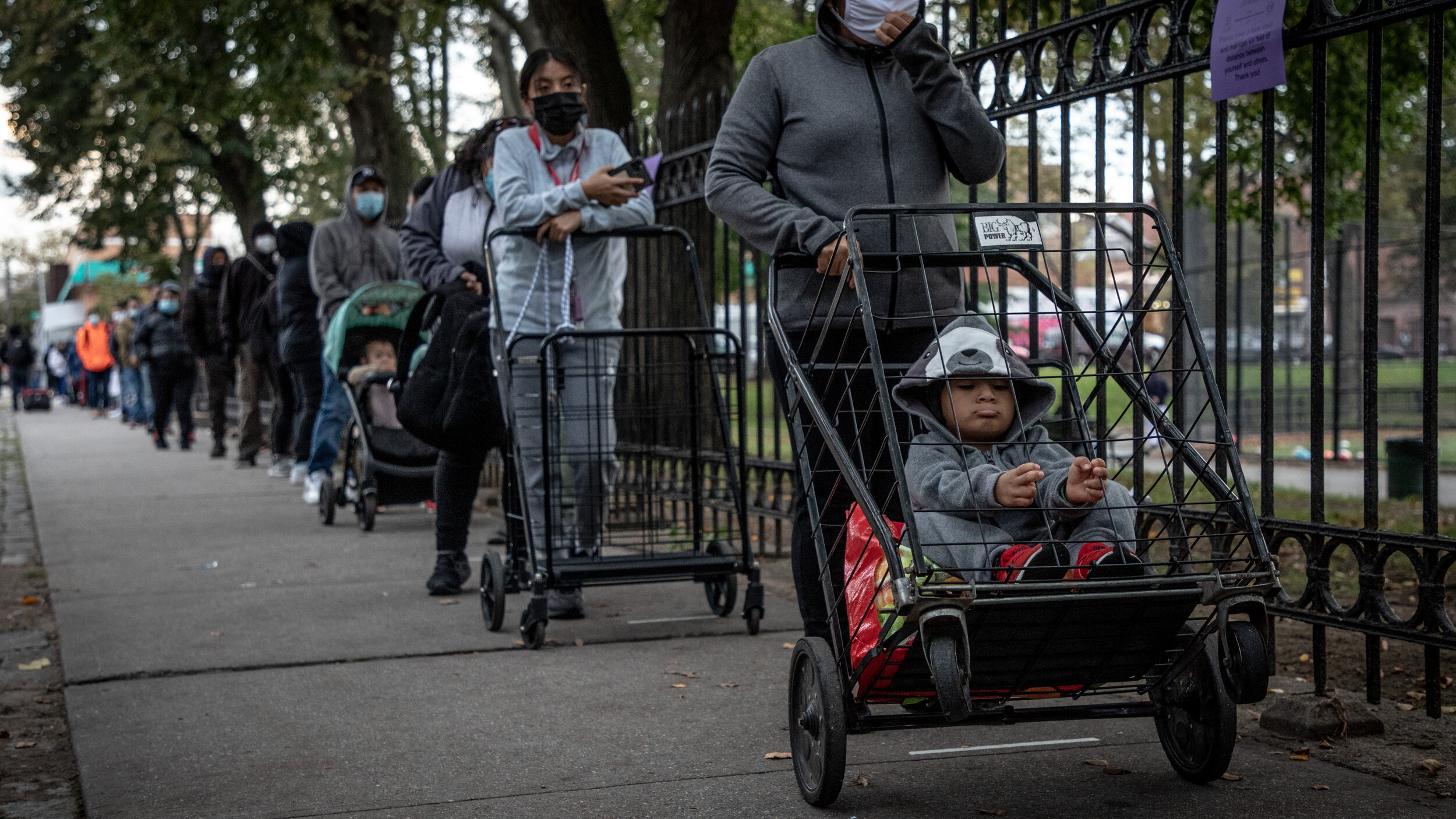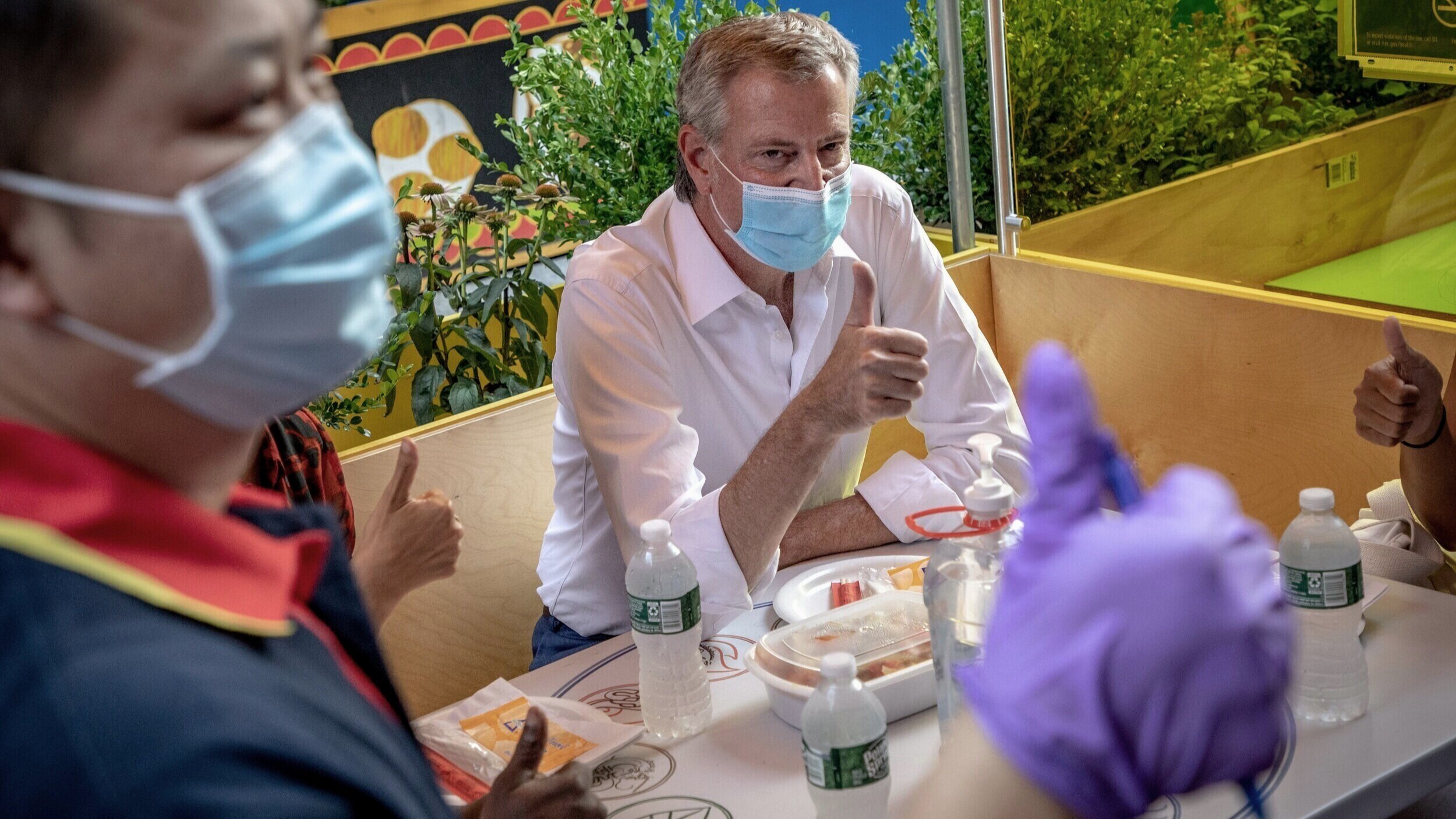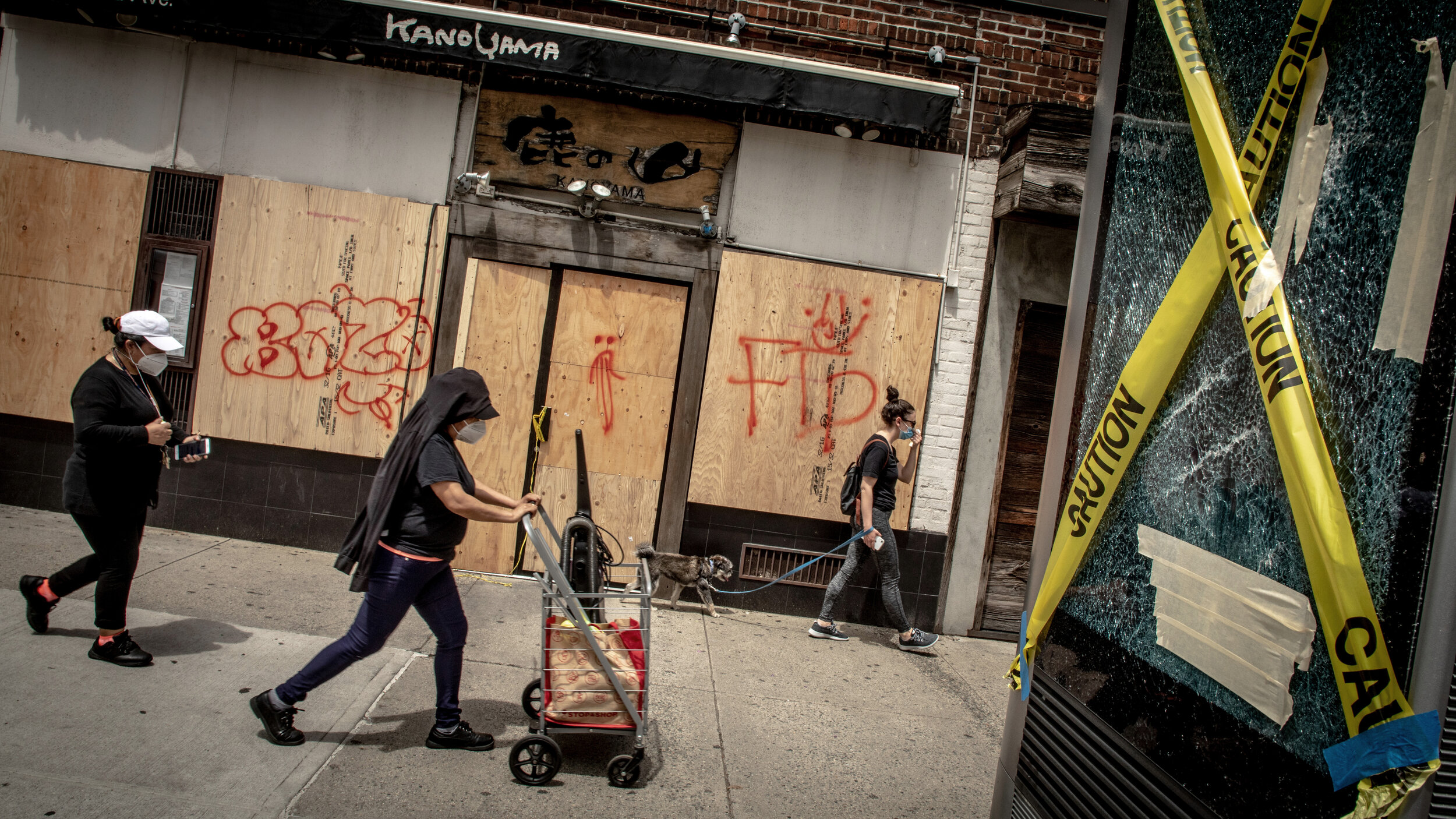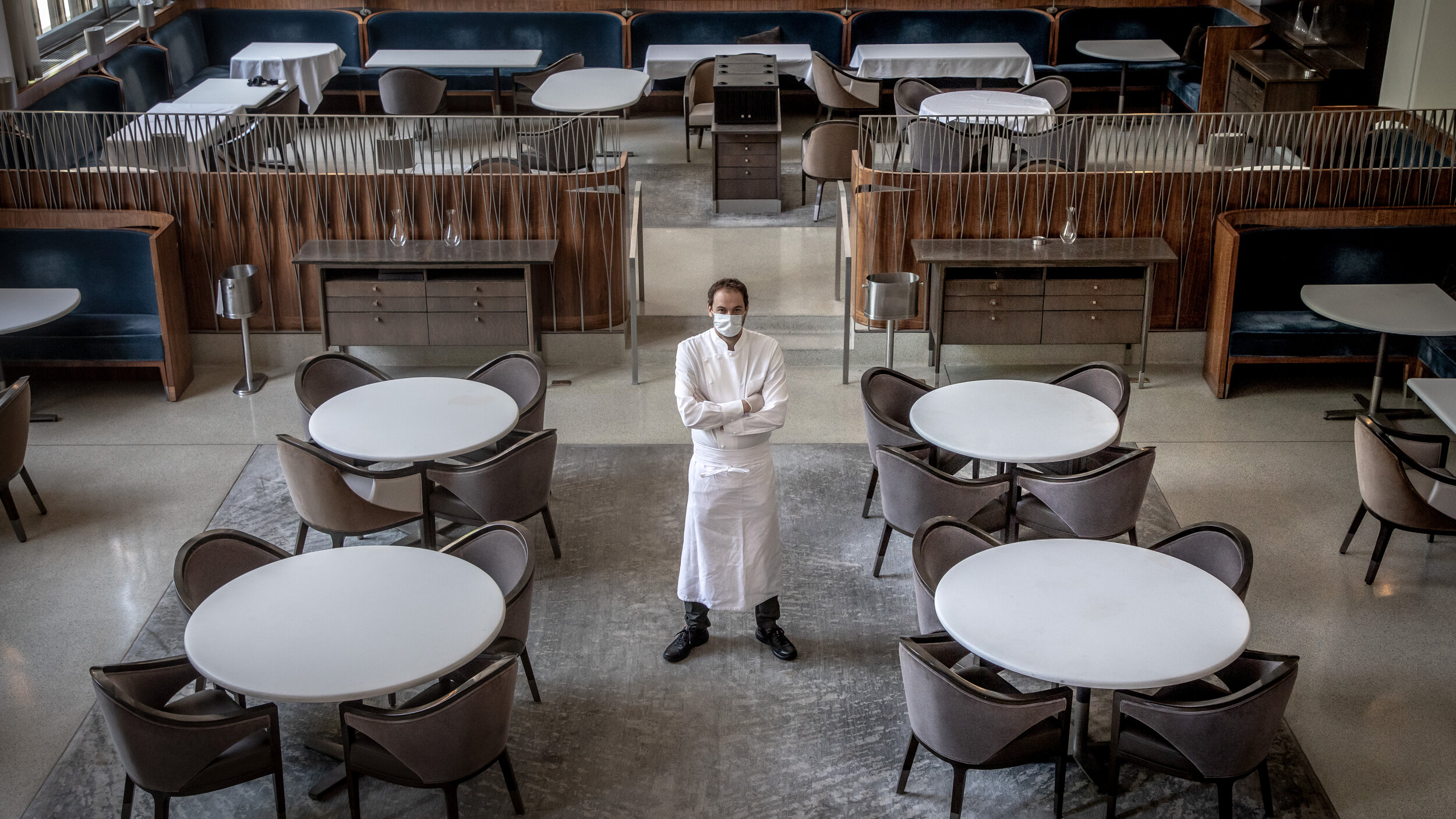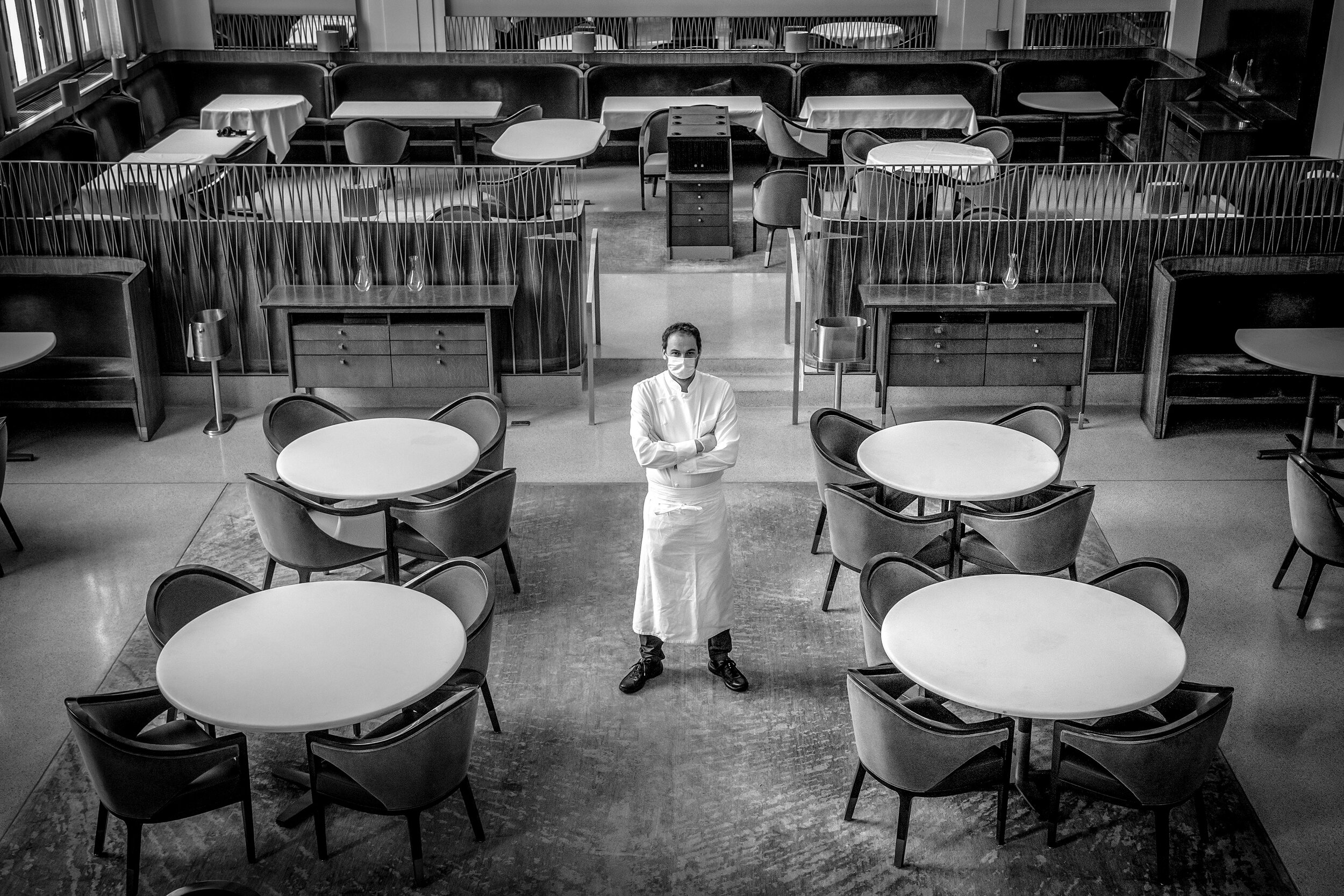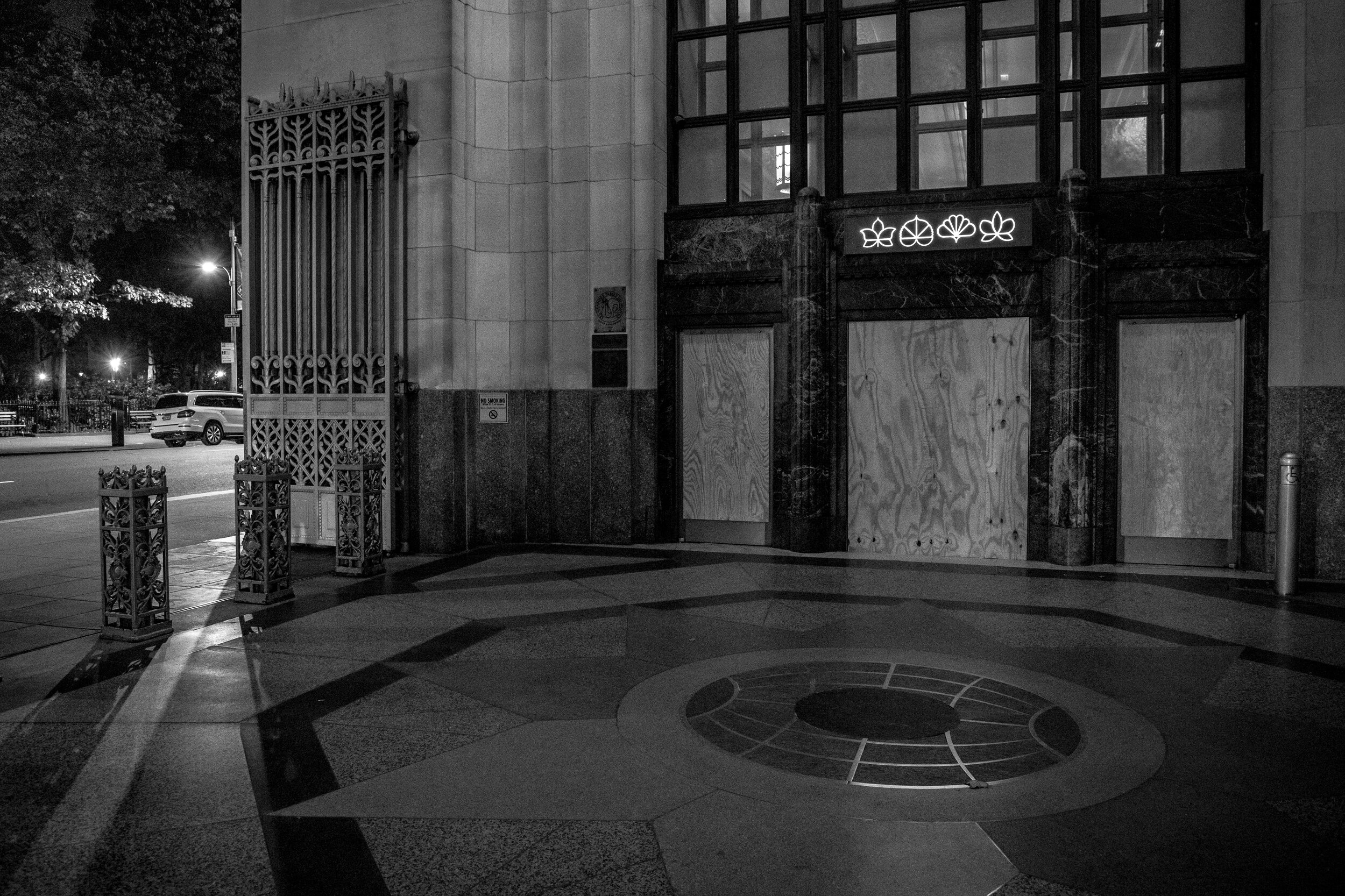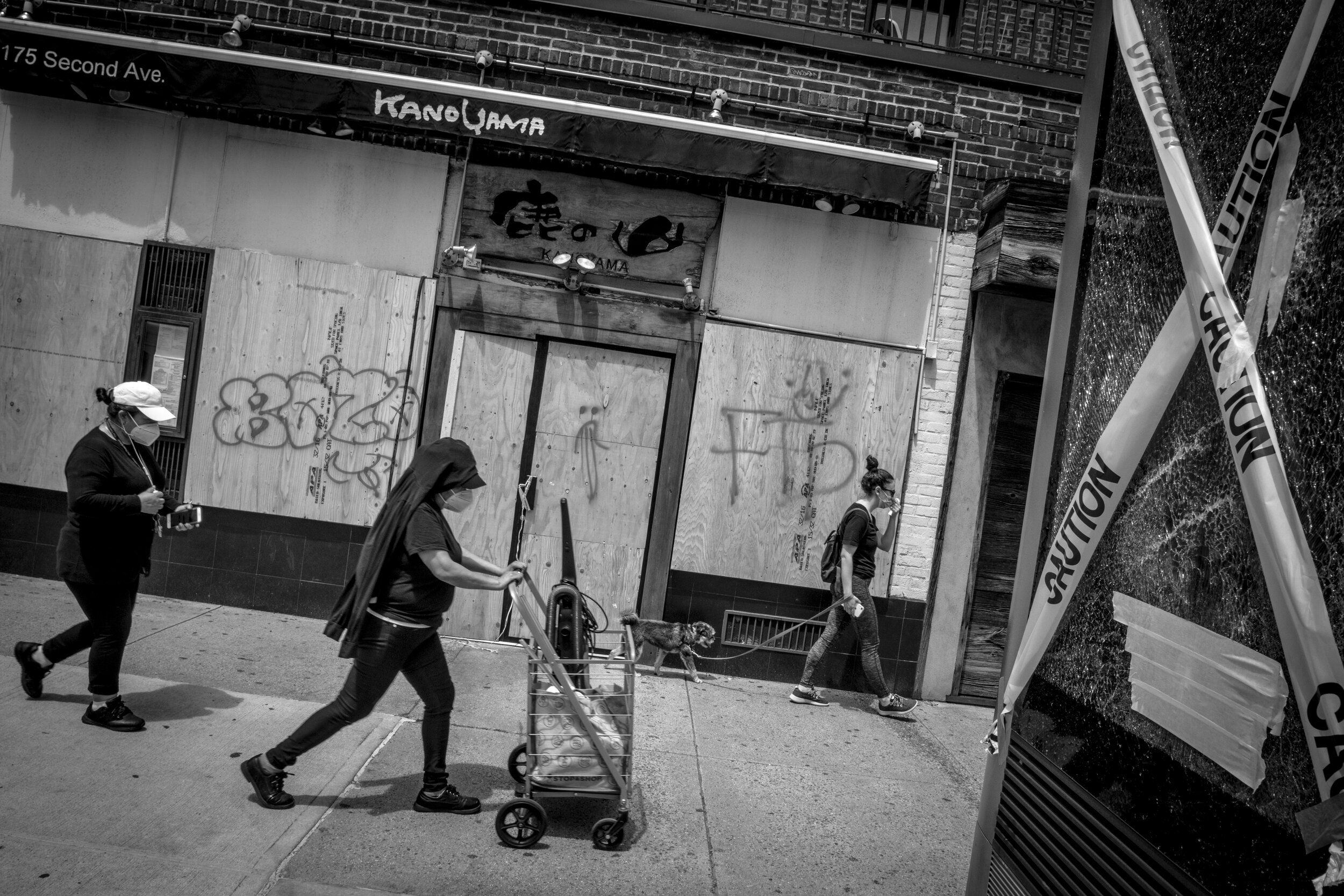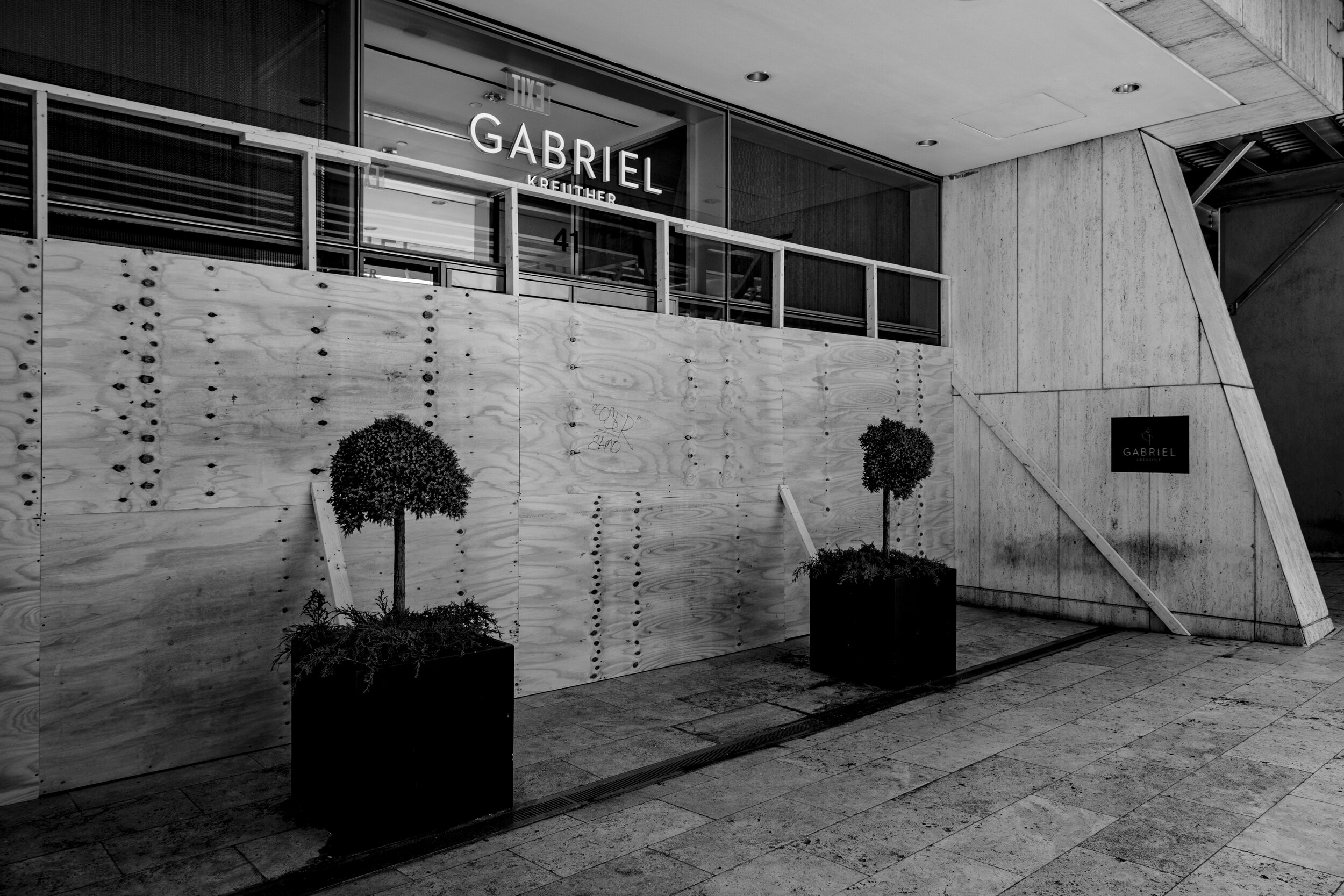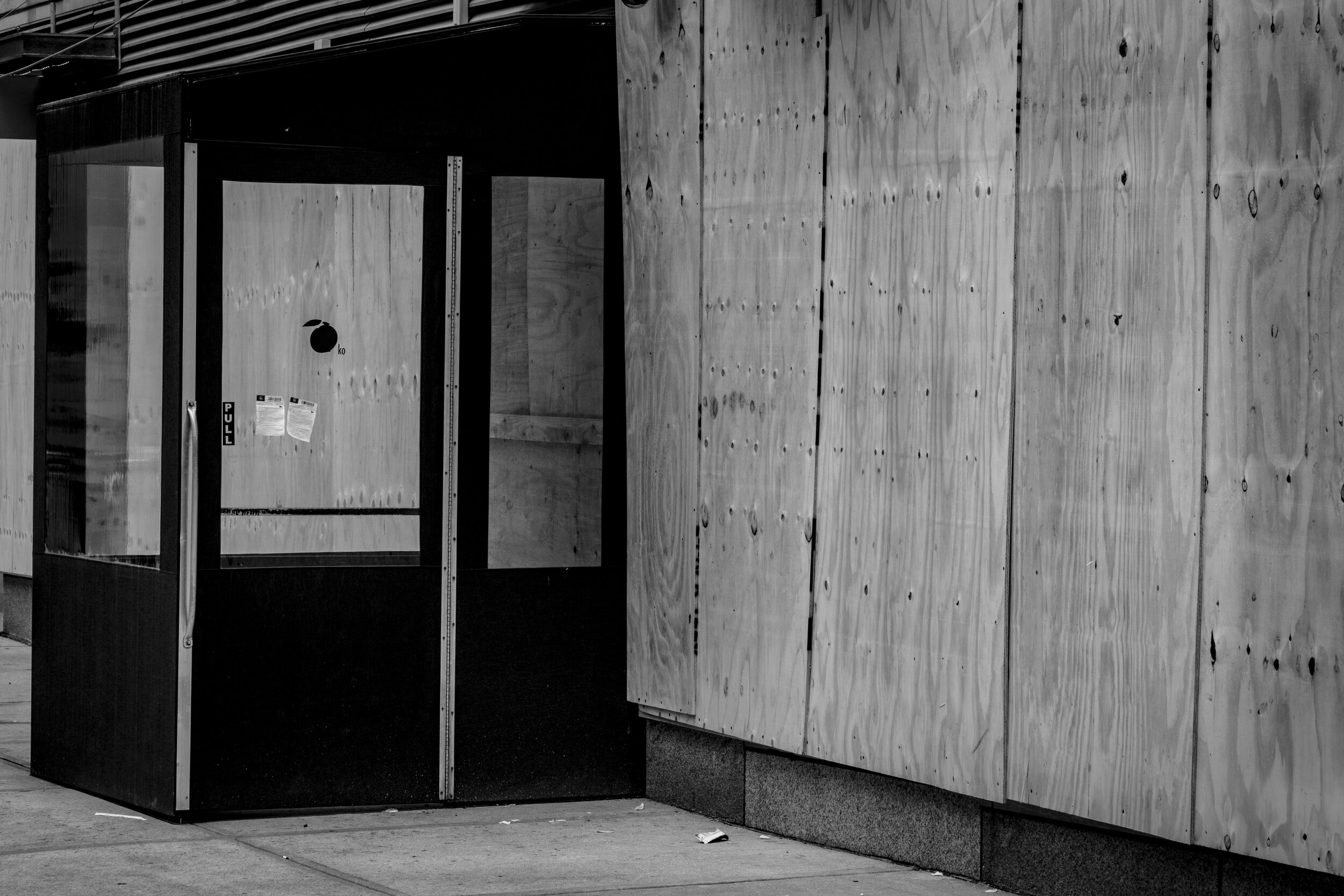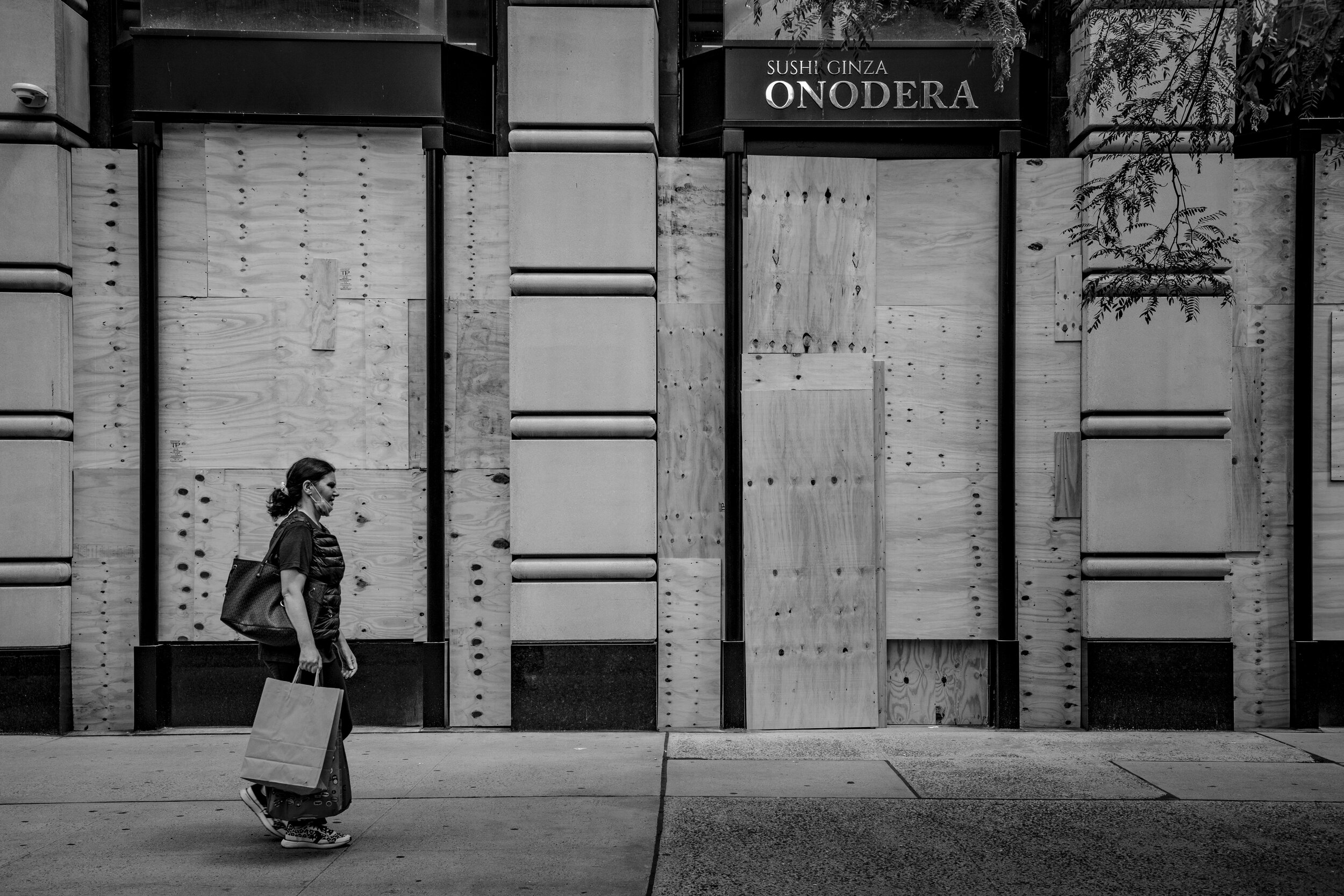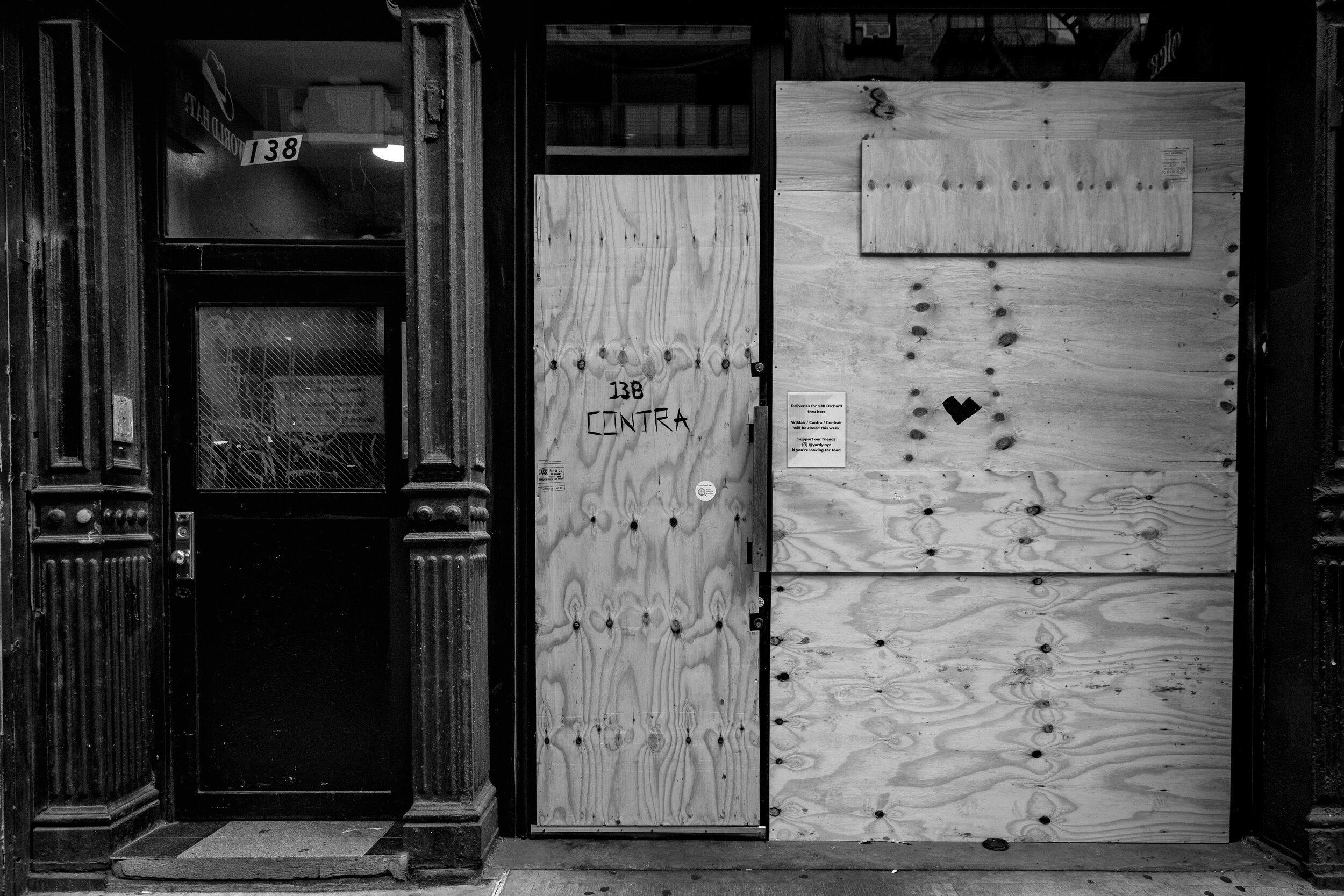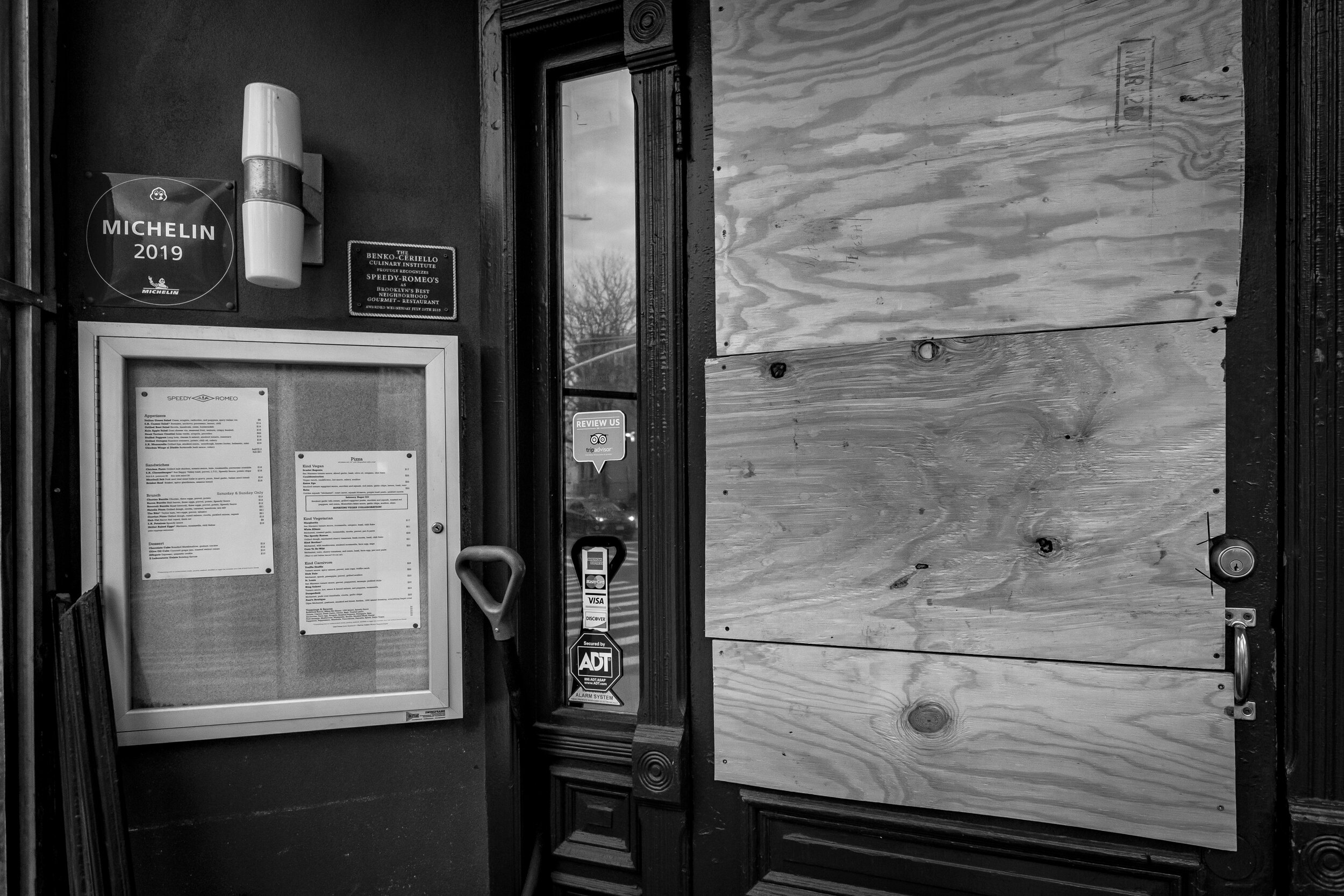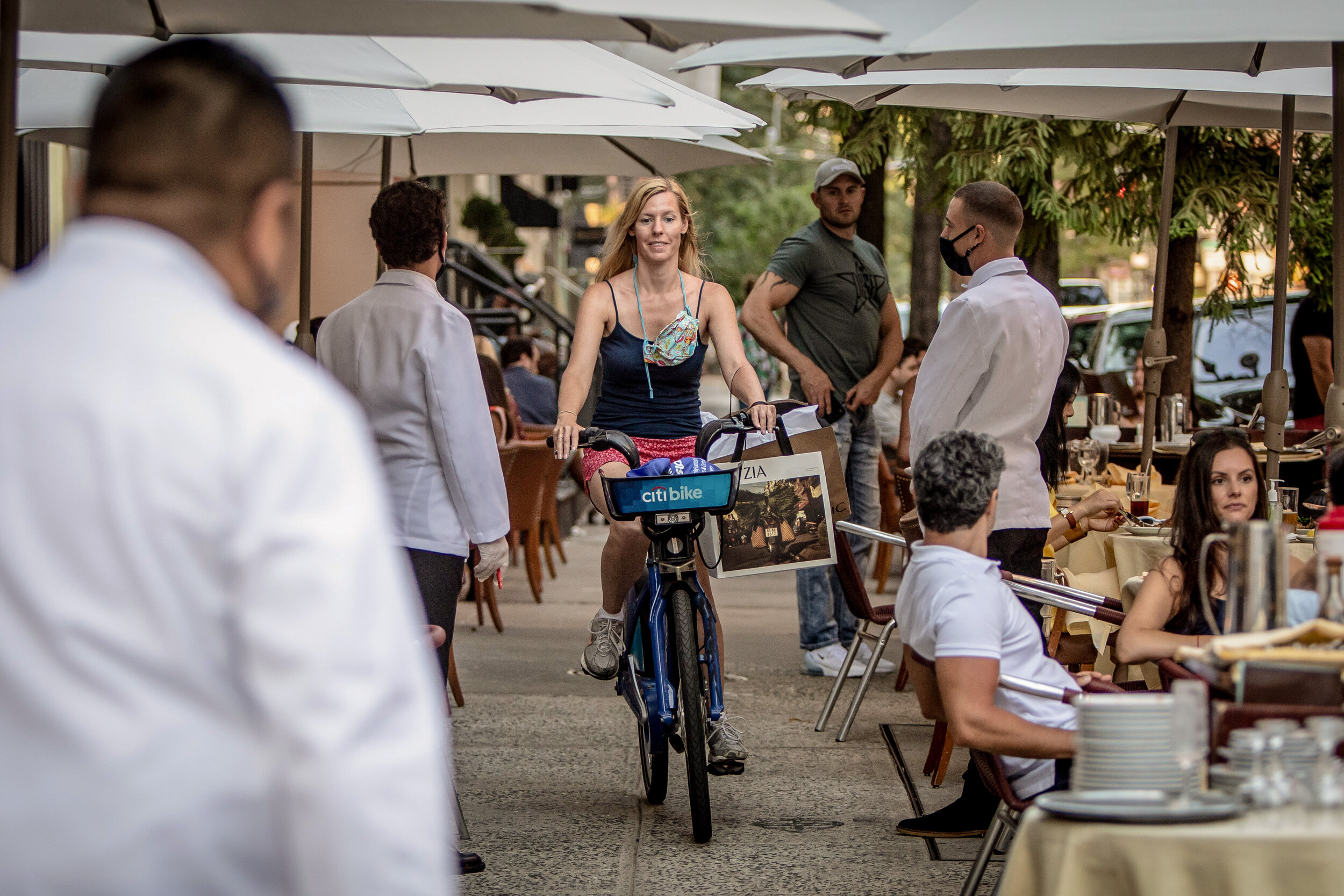Dispatches from the Epicenter
(Editor’s Note: This collection of photos was published in December 2020 as a summary of work completed in one calendar year. For the two-year retrospective, please visit the piece on Eater — Dispatches From an American Epicenter.
For New York City restaurants, the year began like any other.
Champagne flowed. Headlines included such trivialities as “The Secret New Momofuku Restaurant Is Serving Fancy Beef” and “Taco Bell to Bring First-Ever, Three-Story Cantina to Midtown South”.
But overseas in China, a novel coronavirus had sickened thousands.
Fears of the virus and xenophobia heavily impacted Chinese businesses in New York City. In Manhattan’s Chinatown, restaurants saw sales dip as much as 80% in January and February.
The first case of SARS-CoV-2 infection in New York City was recorded on March 1. Six days later, Gov. Andrew Cuomo declared a state of emergency.
On March 14, as New York State logged its first deaths as a result of the coronavirus, bars and restaurants were limited to 50% capacity.
The last great pre-pandemic party took place at Gotham Bar & Grill, a decades-old Michelin-starred joint that decided to shut its doors for good after one final raucous service on March 15.
As the number of cases in New York City skyrocketed, calls to shut down restaurants and bars grew louder…
March 17, 2020
On March 17, all 24,000+ restaurants and bars in New York City were ordered to shutter their dining rooms. Hundreds of thousands of workers lost their jobs overnight as service was limited to takeout and delivery only.
Delivery workers bore the brunt of the risk as they made contact with dozens of customers and restaurants a day.
The sudden introduction of takeout at Michelin-starred red sauce joint Carbone created huge crowds of delivery workers outside the restaurant that had to be broken up by the NYPD, the earliest display of the disproportionate way that COVID-19 risk would impact Black, Latino, and poor workers.
While unemployment rose to 14.7% in April, undocumented workers that make the city’s kitchens tick were ineligible for any government benefits, despite paying taxes their entire careers. Many relied on food pantries and distributions to survive.
Street food vendors reported drops in business by as much as 80%, with most opting to not work at all in the early days of the crisis.
The pandemic did not spare even the much lauded Michelin-starred restaurants: Nix, Ukiyo, Jewel Bako, Bouley at Home, Uncle Boons, and the aforementioned Gotham were among those that permanently shuttered.
“There is definitely a question mark over Eleven Madison Park—if it will reopen,” Daniel Humm told Bloomberg Pursuits about his restaurant, which was rated the Best Restaurant in the World in 2017.
Jason Birchard, owner of Ukrainian diner Veselka in the East Village, reported that sales had dropped 85 percent.
The remnants of Gem Spa as owner Parul Patel handed in the keys. It is estimated that over a thousand New York City food and drink establishments permanently closed in the opening months of the crisis.
“COVID will impact everybody in one way or another,” said Tuan Bui, owner of Lower East Side Vietnamese restaurant An Choi, which struggled during the pandemic and was forced to permanently shutter.
Restaurants faced a reckoning with the Black Lives Matter movement. Some, like Crown Shy in the Financial District, hosted town halls to discuss how staff members were feeling, and to create an action list to address the issues. “Crown Shy has stepped up and opened their ears,” said sous chef India Doris. “They want to learn and they want to understand.” But many other many operators were criticized for posting a black square on Instagram but with no action to back it up.
“You see the restaurant world. No one is making any money—it is about survival,” said chef Daniel Boulud.
Despite the struggles, the months of mask-wearing, social distancing, and staying home seemingly worked: COVID-19 cases were on the decline. When a second wave failed to manifest after weeks of outdoor social justice action, restaurants were set to reopen.
June 22, 2020
Outdoor dining returned to New York City on June 22, 2020.
It was a summer of exuberance. With the positivity rate dropping below 1%, outdoor dining spilling out into the roadways, and tourists beginning to return, it felt like New York City had beaten the virus.
By August, even Mayor Bill de Blasio got into the outdoor dining action, eating lunch in Chinatown with his deputies—press corps en tow.
Restaurants without outdoor dining still relied on takeout and delivery for revenue. The most notable of these was an $800 temaki box from the three-Michelin starred Masa.
Le Bernardin, considered by many to be the best restaurant in New York City, was among those that reopened for indoor dining on the first day it was allowed, September 30. “The energy feels like it did before we closed,” chef Eric Ripert told Bloomberg Pursuits. “We are booked through October. People want to have this back.”
Money was returning to the city: one reopening was even financed by major brands—Boulud Sur Mer at Restaurant Daniel was executed with support from Evian water, Lavazza Coffee, and Daou Vineyards.
“I want be part of the story about doubling down on New York… Being part of the fabric of New York City and the people that are bringing New York City back to life.” —Crown Shy chef James Kent, who along with partner Jeff Katz is building a new restaurant, SAGA, set to open once the pandemic is over.
As businesses tried to piece themselves back together, many of the city’s families continued to fall apart. Buoyed by only a single stimulus check sent back in April, and with dwindling prospects for additional government aid, many relied on distributions and food pantries to be able to survive, months into the pandemic.
Workers emptied out their lockers at 21 Club, a Prohibition-era speakeasy that first opened in 1930. Restaurants continued to shutter as months of dining restrictions took their toll on the businesses.
Epilogue
New York City is in its second wave.
On December 14, the first vaccinations for the virus were administered. “I believe this is the weapon that will end the war,” said Cuomo.
But later that day, indoor dining was once again prohibited after weeks of rising COVID-19 cases and hospitalizations. Governor Cuomo and Mayor de Blasio both suggested that additional lockdowns would likely follow.
The NYC Hospitality Alliance has estimated that as many as two thirds of restaurants could shutter by the end of the crisis. Over a hundred thousand restaurant workers remain unemployed. •
